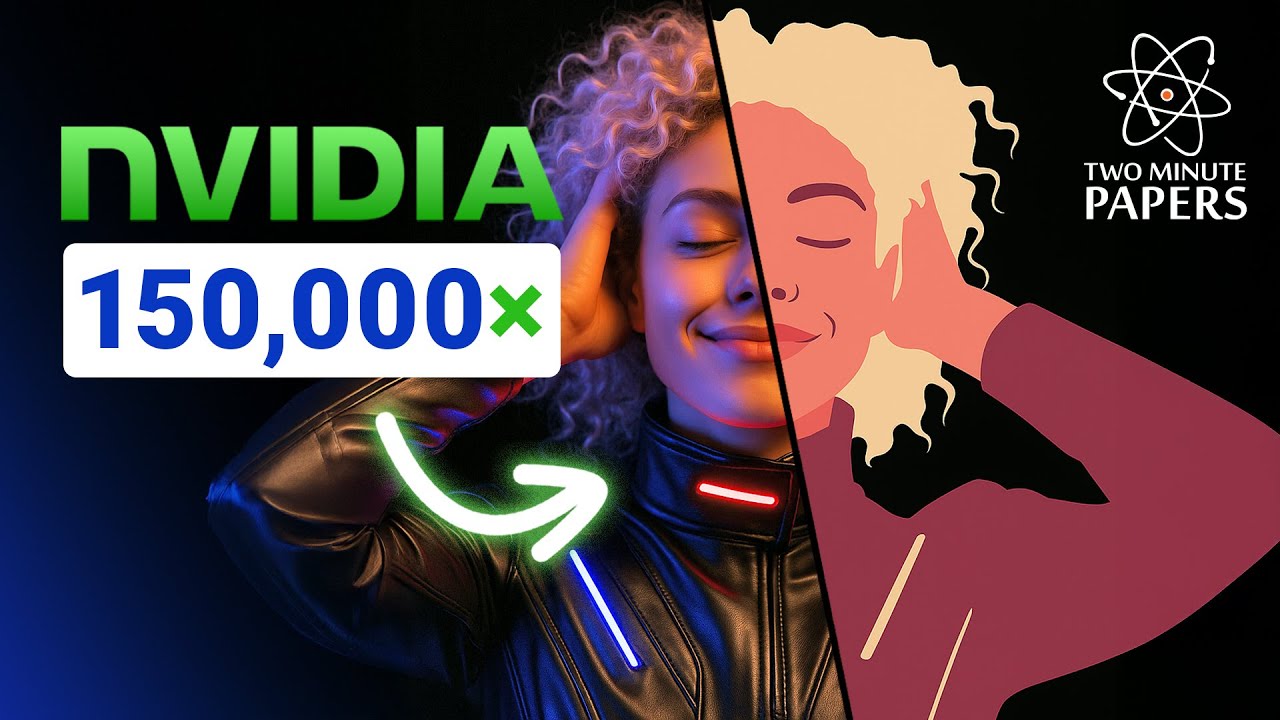NVIDIA researchers have developed an advanced AI capable of creating highly realistic and complex scene relighting by analyzing videos without relying on traditional 3D software, using a novel method that separates lighting from material properties through inverse rendering. This breakthrough, learned from 150,000 videos, enables rapid, believable scene generation with applications in autonomous vehicles, gaming, and immersive media, marking a significant progress in computer graphics and scene understanding.
The video highlights an incredible breakthrough by NVIDIA researchers in AI-generated visuals. They demonstrate that AI can produce highly realistic and complex scenes, such as a cat in a newly lit environment, without traditional game engines or 3D software. Instead, they input a real video, and the AI recreates the scene with realistic lighting and environment changes instantly, showcasing a revolutionary approach to scene generation.
The discussion compares this new method to previous techniques like Neural Gaffer and DiffusionRenderer, which had limited success in realistic relighting and scene rendering. Earlier methods struggled with artifacts and unrealistic results, especially in complex scenes with shiny or transparent objects. The new AI technique, however, dramatically improves these outcomes, producing near-perfect, believable renderings in a fraction of the time and effort.
This AI-driven process works by analyzing the input video to separate lighting from material properties, creating what is called an albedo map. The AI captures even fine details like hair accurately and applies new lighting environments convincingly, allowing scenes to be relit seamlessly. The capability extends to challenging scenes with many reflective or shiny objects, where previous techniques failed, but the current method produces highly realistic visuals.
A key aspect of this breakthrough is how the AI learned from analyzing 150,000 videos. Surprisingly, these videos did not include explicit material information, which is normally essential for realistic relighting. To overcome this, NVIDIA employed a clever workaround using a pre-trained inverse rendering technique. This method “guesses” the material properties by stripping away lighting effects, akin to karaoke removing vocals from a song, enabling the AI to infer scene materials accurately.
The overall impact of this advancement is significant, with applications ranging from training resilient self-driving cars to creating immersive video game environments. The AI’s ability to quickly generate consistent, realistic scene variations marks a major step forward in computer graphics and scene understanding. The presentation concludes with admiration for the rapid progress and the innovative approach, emphasizing how extraordinary these developments are in just a few months.
